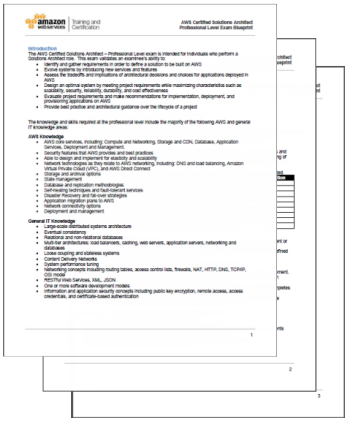
Hands-on experience with AWS deployment and management servicesįamiliarity with AWS CLI, AWS APIs, AWS CloudFormation templates, the AWS Billing Console, and the AWS Management ConsoleĪbility to identify and define technical requirements for an AWS-based applicationĮxplain and apply the five pillars of the AWS Well-Architected FrameworkĪbility to identify which AWS services meet a given technical requirementĭesign a hybrid architecture using key AWS technologies (e.g., VPN, AWS Direct Connect) Hands-on experience using compute, networking, storage, and database AWS servicesĪbility to evaluate cloud application requirements and make architectural recommendations for implementation, deployment, and provisioning applications on AWS Two or more years of hands-on experience designing and deploying cloud architecture on AWS
Aws solution architect associate professional#
*The above text is quoted verbatim from the AWS certification site as published on Recommended Knowledge and Experience Solutions Architect Professional

Provide implementation guidance based on best practices to the organixzation throughout the life cycle of the projectĭesign and deploy enterprise-wide scalable operations on AWS Migrate complex, multi-tier applications on AWS Select appropriate AWS servicse to design and deploy an application based on given requirementsĭefine a solution using architectural design principles based on customer requirements

Aws solution architect associate how to#
Abilities Validated Solutions Architect Professionalĭesign and deploy dynamically scalable, highly availablee, fault-tolerant and reliable applications on AWSĮffectively demonstrate knowledge of how to architect and deploy seceure and robust applications on AWS technologies

So you might be asking, “What is the difference between the Associate and Professional exams?” From AWS, these are the abilities that are validated by each exam.


 0 kommentar(er)
0 kommentar(er)
